
Does Hair Regrow in Donor Area After FUE?
The short answer is yes, the donor area will look fuller after a few months as the surrounding hair thickens
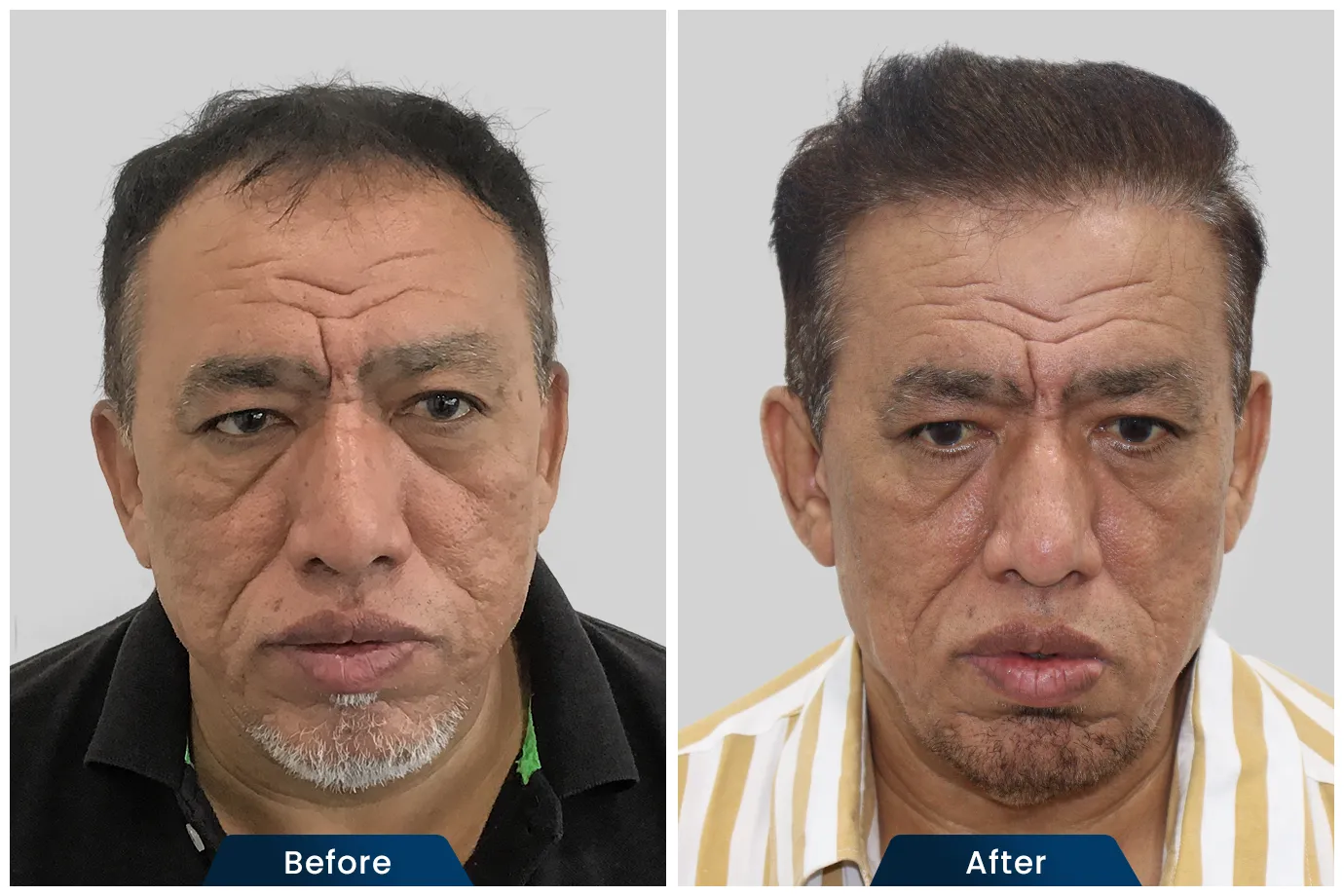
Hair loss and baldness are major issues for millions of people worldwide at a young age. Medical science should continue research to deliver effective and safe solutions to every individual. Stem cell hair treatments are new, emerging treatment modalities in hair restoration that have regenerative properties to stimulate hair growth.
Stress, bad lifestyle, and pollution are excessively prevalent in today’s lifestyle. People suffer from baldness and hair loss at a young age, so they seek hair treatment options that’s natural and effective. Stem cell therapy is one such treatment option, which not only stimulates natural hair growth but also repairs damaged hair follicles as well.
Stem cells are regenerative cells in the human body that potential to divide and develop new cell types to repair damaged tissues and cells in any body area. They are characterised by their ability to self-renew and regenerate.
Stem cell FUE hair transplants involve harvesting stem cells from adipose tissue or bone marrow, processing them, and injecting them into the scalp to stimulate hair growth and injecting and adding them with hair follicles to stimulate faster recovery and enhance the hair transplant result at the recipient site.
This dual treatment approach enhances scalp health to regenerate the damaged stem cells in hair follicles, to stimulate healthy hair growth that reverses your baldness and regains your confidence
Stem Cell FUE Hair Transplant is a revolutionary regenerative therapy that utilizes your body’s own hair follicle-derived stem cells to stimulate hair re-growth and improve scalp health. This treatment ensures long-term hair restoration benefits.
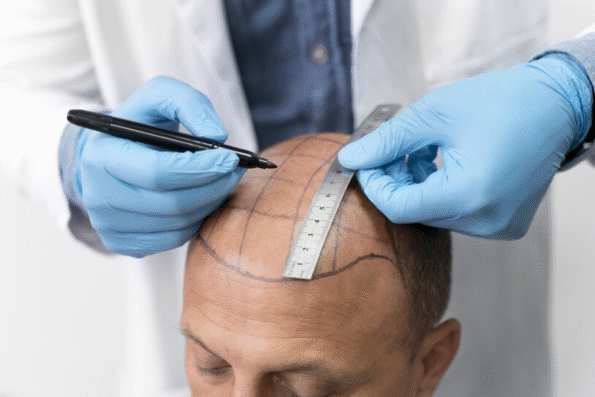
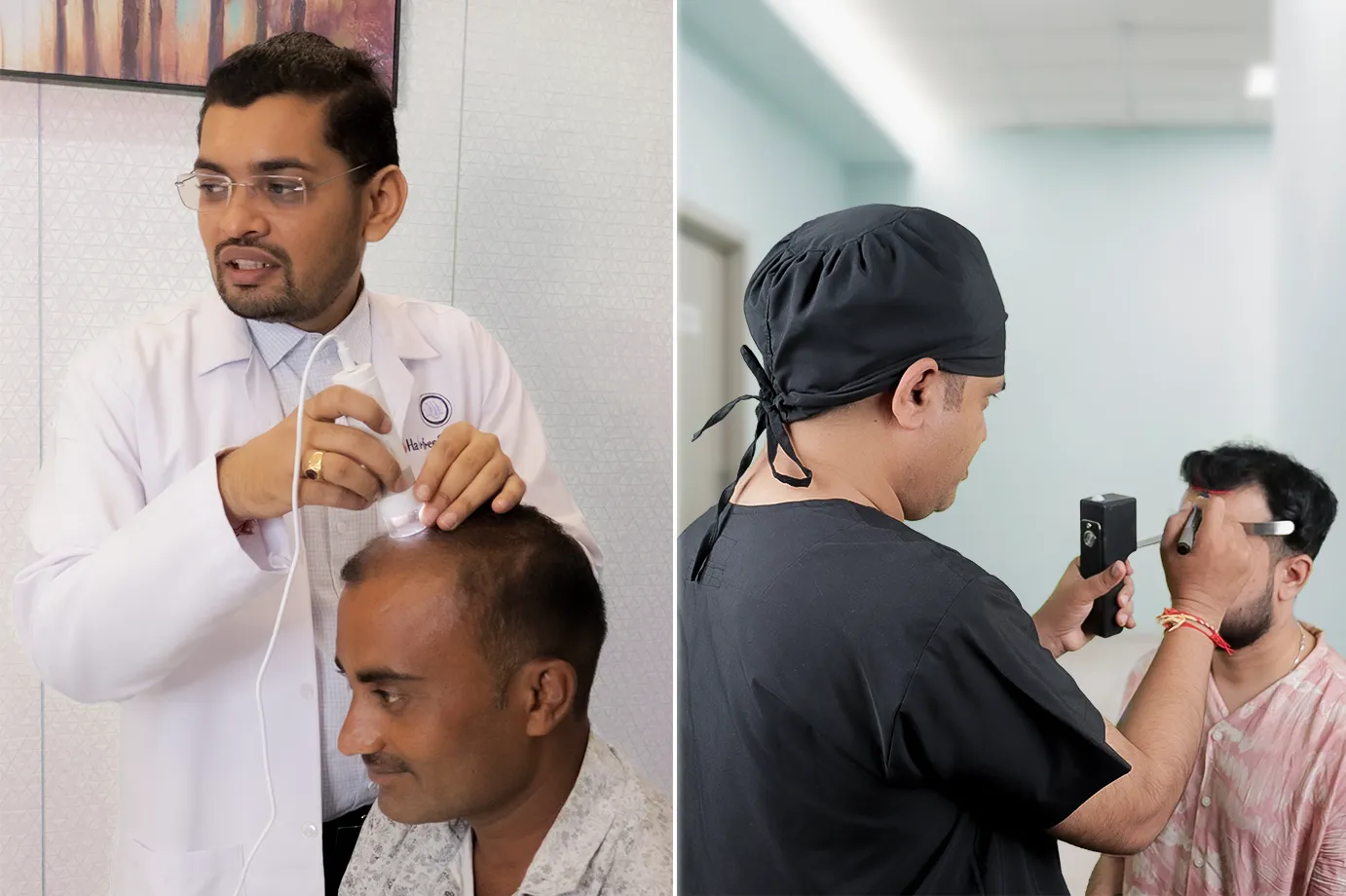
Step – 1
Particular enzymes are prepared to aid in the extraction of progenitor cells from hair follicles.
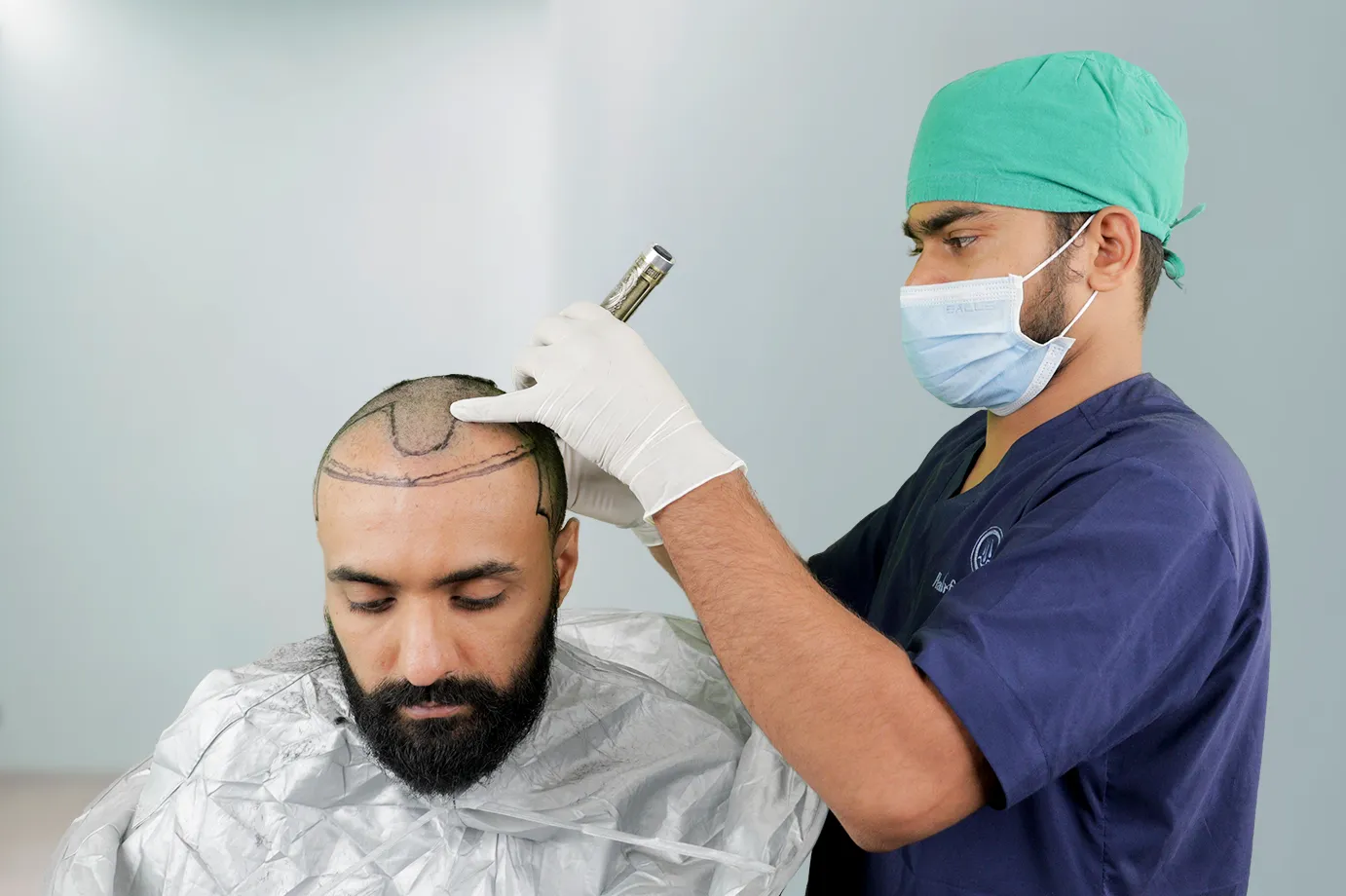
Step – 2
Under local anaesthesia, more than 100 hair grafts and surrounding fat tissues are picked up in a minimally invasive way from the donor areas, as to a minor liposuction procedure. They are rinsed properly to ensure purity.
The fat will be taken from a usually stubborn area using a circular blade and will then be divided into two portions using a centrifuge.
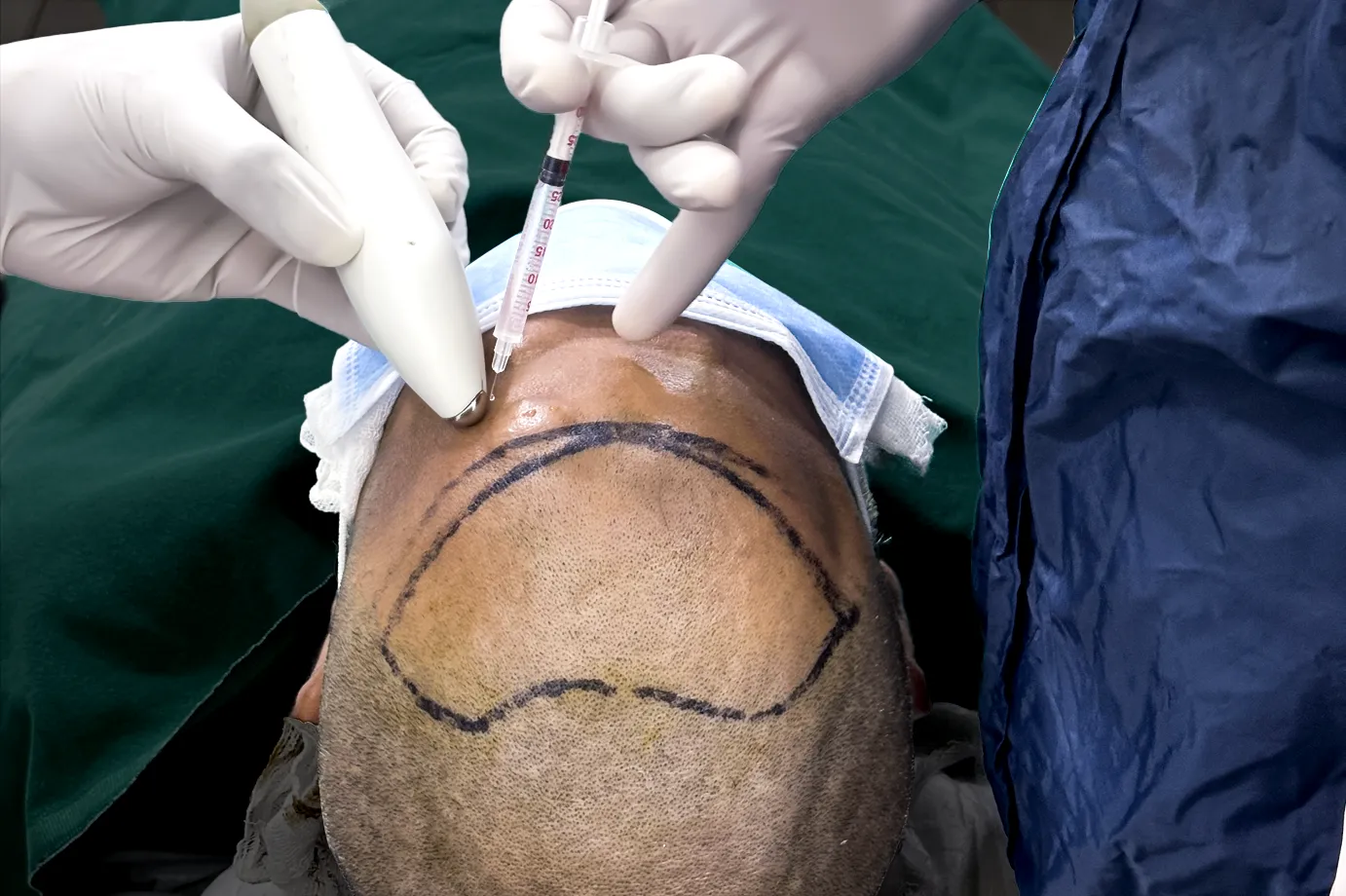
Step – 3
Treatment of hair follicles with the enzyme previously prepared for releasing Progenitor Cells present in the follicular bulge.
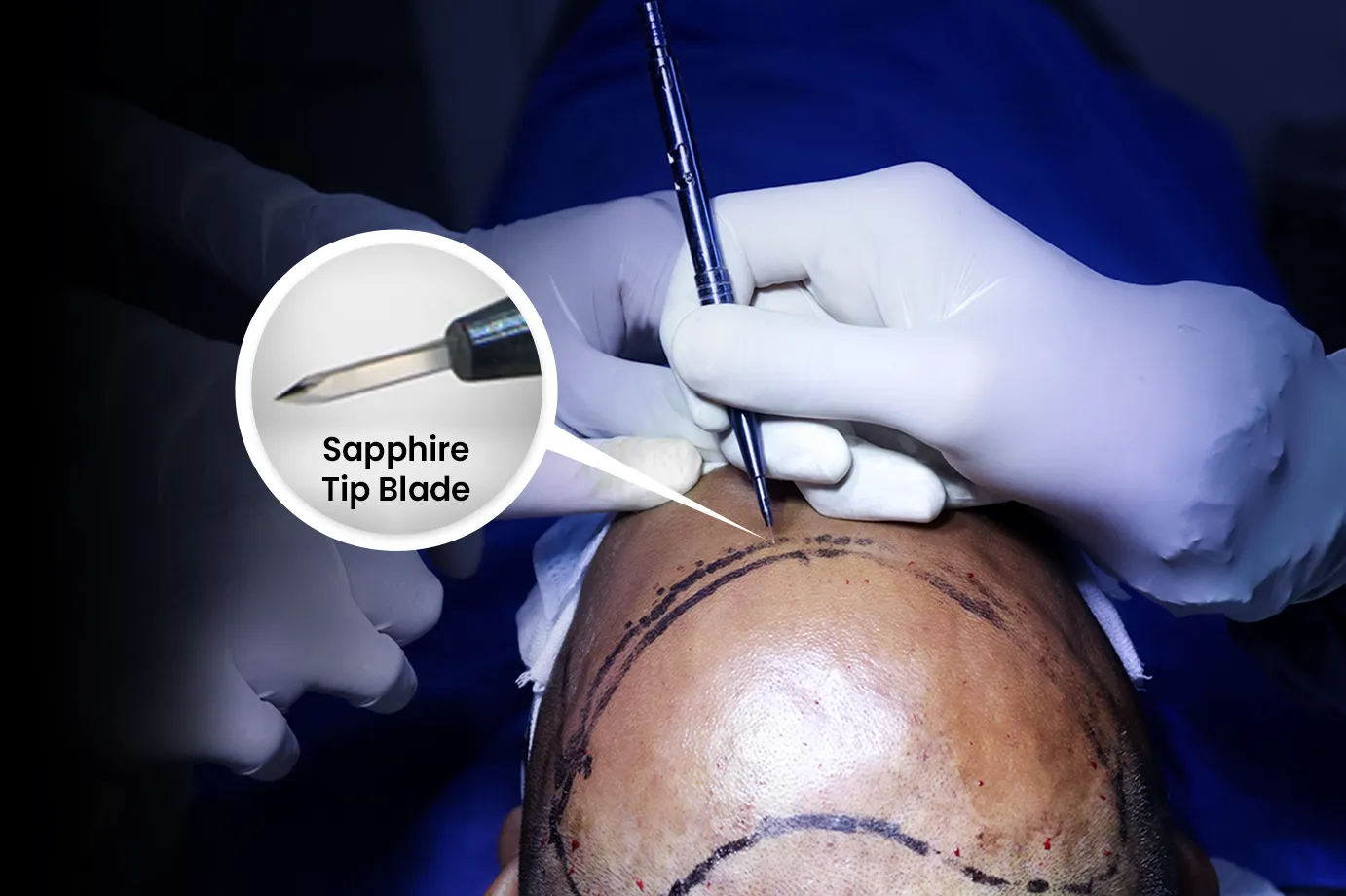
Step – 4
The material is extracted and filtered from the debris, leaving behind a rich progenitor cell suspension.
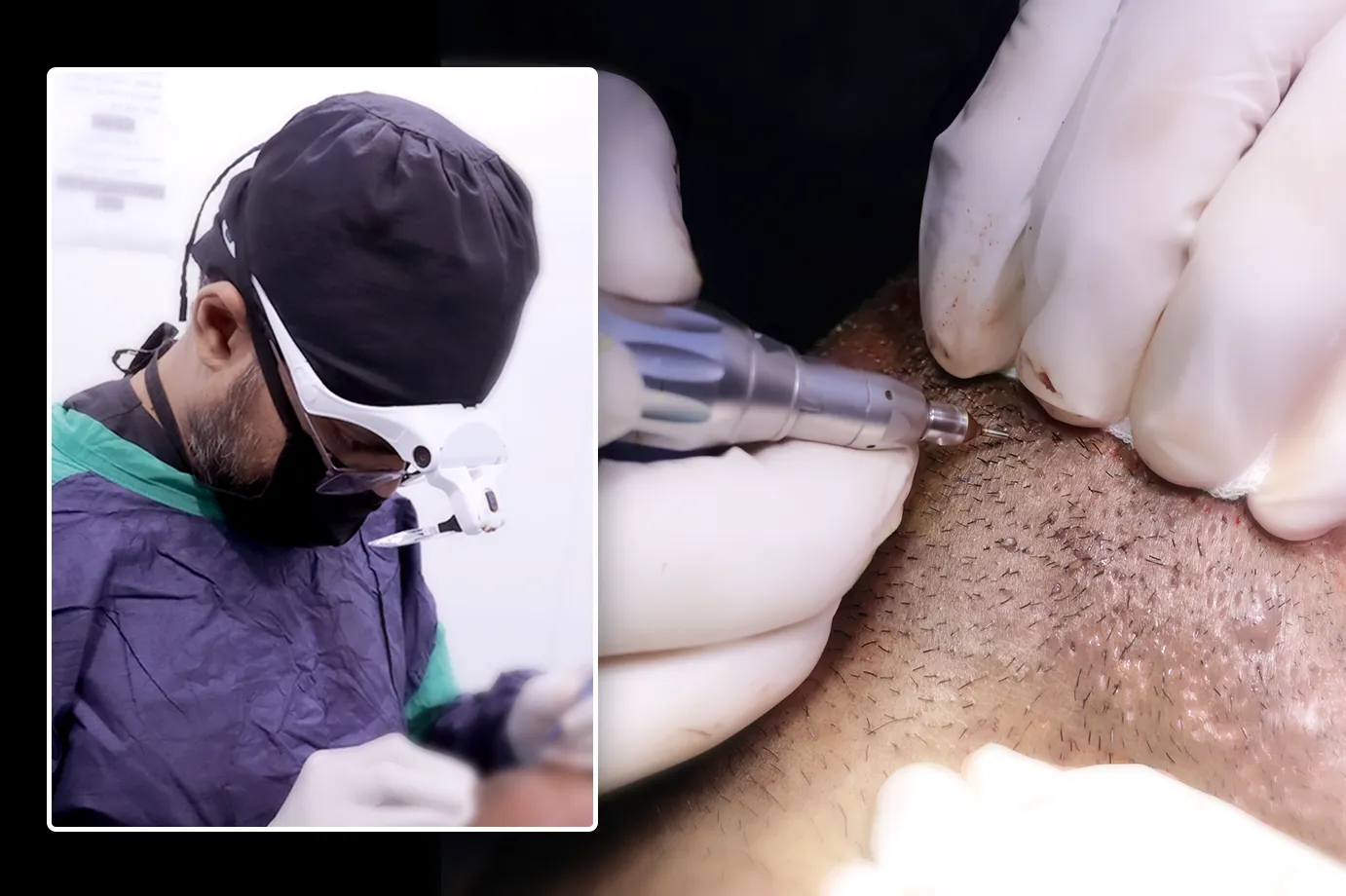
Step – 5
These cells are spun in a centrifuge to purify the stem cells and are then resuspended in a nutrient-rich solution.

Step – 6
For boosting sustenance, the suspension is also mixed with bioactive factors from his blood plasma.
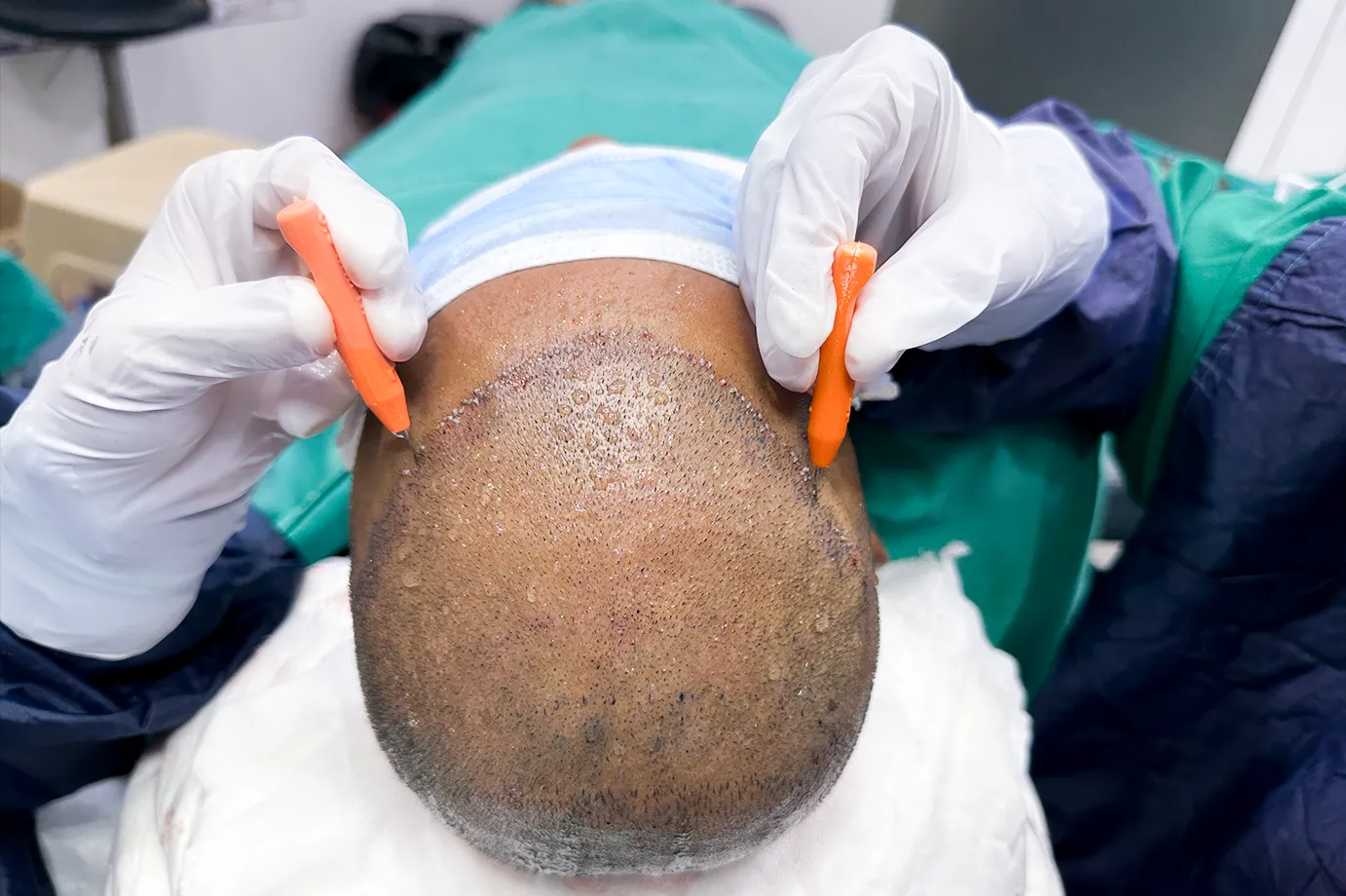
Step – 7
The concentrated stem cell solution is very precisely injected into the recipient areas of the scalp, with particular regard toward the areas with hair loss or thinning.
✅ Natural Hair Growth – Increased thickness and density.
✅ Can treat full baldness and alopecia
✅ No scarring as minimally invasive
✅ Quick procedure and fast recovery – Return to normal activities quickly.
✅ Improve the durability of weak hair follicles
✅ Stimulate older hair follicles for better regrowth
✅ Can be used from anywhere on your body
✅ Enhanced Results
✅ Minimal Downtime
✅ Boosted Confidence
✅ Long-Term Cost Savings – No need for frequent follow-up treatments.
✅ Comprehensive Hair Renewal – Not only restores but enhances existing hair.
Discover the benefits of stem cell hair transplants for your hair loss and baldness – book your consultation today!

“Stem Cell Hair Transplantation offers numerous advantages over traditional methods.”
Traditional FUE involves extracting and transplanting individual hair follicles from the donor area to the recipient area. Stem cell transplants, on the other hand, focus on stimulating hair growth using the body’s regenerative capabilities.
Recovery after a stem cell hair transplant is typically quick. Most patients resume normal activities within 2–3 days. Minor redness or swelling may last a few days, but there’s no major downtime. Full scalp healing occurs within 1–2 weeks, and new hair growth becomes noticeable within 3 to 6 months.
You should consider a stem cell hair transplant if you have thinning hair or early-stage baldness and want a minimally invasive, regenerative solution. It’s ideal for people seeking long-term hair restoration, improved follicle health, and natural results without visible scarring. A consultation with a specialist is necessary to confirm eligibility.
In Turkey, stem cell hair treatment typically costs between $2,000 and $4,000, depending on clinic reputation, technology used, and treatment complexity. Turkey is popular for affordable yet high-quality medical tourism, but ensure the clinic is licensed and uses medically approved stem cell techniques for safety and effectiveness.
Yes, Stem Cell FUE offers advantages over traditional FUE. It combines follicular extraction with stem cell therapy to enhance graft survival, speed up healing, and improve overall hair density. The added regenerative benefits result in healthier scalp conditions, more natural results, and longer-lasting outcomes than standard FUE.
Stem cells are usually harvested from adipose (fat) tissue or scalp tissue using a minor liposuction-like procedure or follicle collection. These tissues are processed using enzymes and centrifugation to isolate stem or progenitor cells. The final cell-rich solution is then injected into the scalp to stimulate hair growth.
In India, the cost of a Stem Cell FUE hair transplant ranges from ₹90,000 to ₹2,50,000, depending on the clinic, number of grafts, and inclusion of advanced stem cell processing. It’s generally more expensive than traditional FUE but offers added benefits like faster recovery and better long-term results.
Stem cell hair transplants offer long-lasting results, but they are not guaranteed to be 100% permanent. The procedure improves hair density and regrowth by rejuvenating follicles, but future hair loss can still occur due to genetics or hormones. Maintenance and a healthy lifestyle can help extend results significantly.
Stem cell hair transplants are generally safe when performed by qualified professionals. Side effects are minimal, including mild swelling, redness, or discomfort. Since the cells are autologous (from your own body), the risk of rejection or allergy is extremely low. Always choose a licensed, experienced clinic to ensure safety.
Ideal candidates include individuals with early-to-moderate hair loss, thinning hair, or alopecia who still have active follicles. It’s best for those who seek a non-scarring, regenerative treatment. People with complete baldness or underlying health issues may need a detailed consultation to determine suitability before the procedure.
A single Stem Cell FUE session can transplant 2,000 to 4,000 grafts, depending on the donor area and individual scalp conditions. The added stem cell therapy helps improve the survival rate and quality of these grafts, ensuring better density, faster recovery, and stronger, longer-lasting hair regrowth results.

The short answer is yes, the donor area will look fuller after a few months as the surrounding hair thickens

Technology has completely changed hair transplantation and restoration and is expected to transform aesthetic medicine in the next few years.

Hair loss affects people across all ethnicities. However, treatment techniques often vary based on one’s genetic background. This article will
Find Out in 3 Minutes, Your Hair Problem Solution.